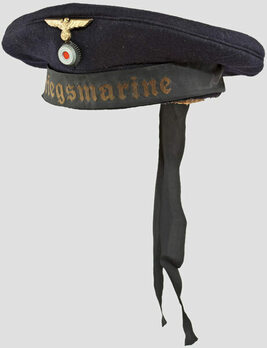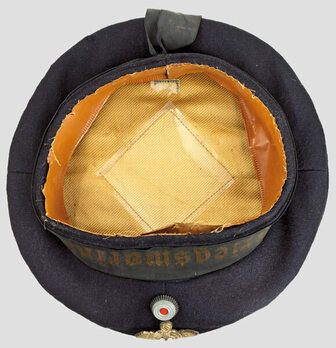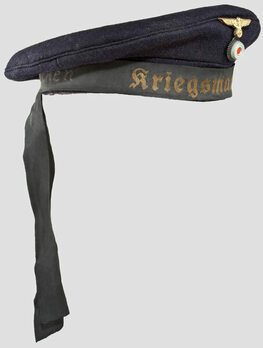Kriegsmarine Blue Sailor's Cap
SKU: 21.GOR.01.03.02.001
Estimated market value:



Estimated market value:
Attributes
History
The headgear and uniforms worn by members of the Kriegsmarine were based upon the designs utilized by the Kaiserliche Marine and the Reichsmarine. The official regulations governing the uniforms of the Reichsmarine were issued on April 5, 1921, and they were embraced, with a few alterations, as the Kriegsmarine uniforms in 1935. New guidelines concerning rank insignia were issued in 1936.
The Cap was primarily worn by Kriegsmarine personnel who held the rank of Junior Non-Commissioned Officer or Private. It was also worn by Kriegsmarine Cadets during the Second World War.
It is composed of several main elements, including the cloth top cover and piping, the navy blue cap band with piping, the cap band tally (mützenbänder), the interior lining, the diamond-shaped moisture shield, the brown leather sweat band, and the manufacturer’s logo and associated information. Each cap was also adorned with a tricolour cockade and a national emblem.
In 1926, caps with a removable top cover were introduced. These caps had an additional layer of white gauze added to the top of the cloth lining. This form of cap allowed the personnel to switch between a navy blue top cover and a white top cover. The navy blue top cover was utilized for general wear, while the white top cover was only meant to be worn in tropical climates; this regulation was largely ignored. The caps with a permanent top cover were often manufactured privately.
In 1919, the cap band tallies (mützenband) featured the name of the unit or ship of the wearer in Latin lettering. In 1929, the lettering used on the tallies was changed to Gothic. Initially, all numbers were written in the Roman style, but they were changed to the Arabic style in 1935. Lastly, in 1938, a standardized tally policy was introduced wherein “KRIEGSMARINE” was the only lettering featured on the tally. In September 1939, all other peacetime tally variations were removed from circulation. These tallies were generally composed of silk, and the gold-coloured letters were machine embroidered with rayon, cotton, and artificial silk thread; gilt thread quickly oxidized as a result of the sea air.
This cap was also known as the Enlisted Men's Cap, the Service Cap (Dienstmütze), the Cloth Cap (Tuchmütze), and unofficially as the Donald Duck Cap.

Versions
$300 USD


Comments
Sign in to comment and reply.


Scroll Top